Warm Spices for Cold Weather
Disclosure: This post may contain affiliate links
When cold temps come, it’s the perfect time to reach for the warm spices in your spice rack that bring the heat to dishes.
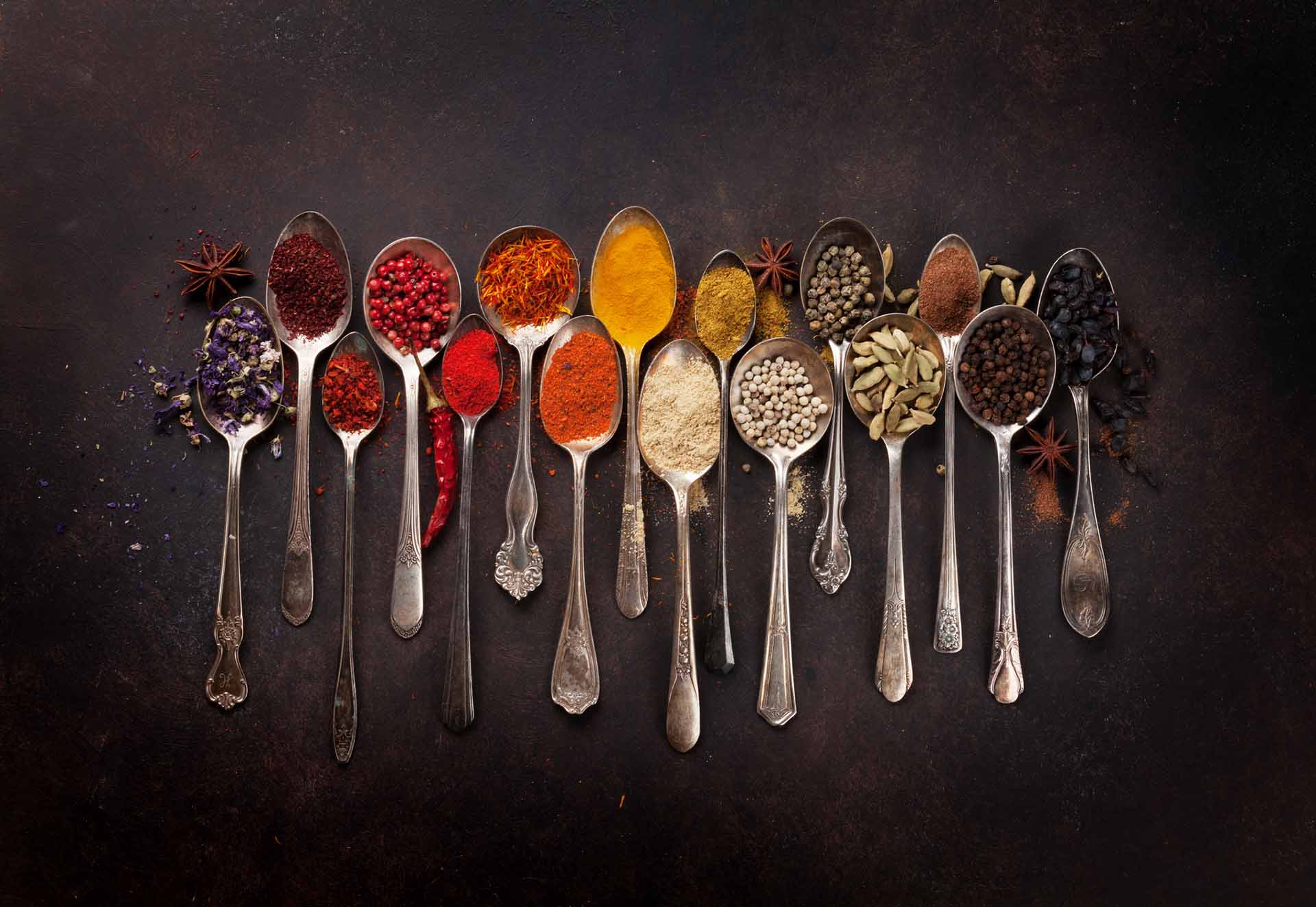
What's in this post
Winter often means cold temperatures and that means one thing: Staying warm. It’s the perfect time for sweaters, extra-thick socks, cozy blankets, and mugs of hot tea.
And, it’s also an ideal time to reach for the spices in your spice rack that bring the heat to dishes.
Spices come from the root, bark, seed, or dried fruit of a plant or seed. They contain essential oil, and this is where spices get their flavors. Interestingly, many spices have the same oils only in varying amounts, and it’s the difference in proportions that creates different tastes.
To release the essential oils, aka the flavor, the spices must be ground, grated, or crushed.
Money-Saving Spice Tip
If you don’t already know about it, this tip will change your life: Buy your spices in bulk.
There are a few reasons for this.
- It’s way cheaper. Seriously, a nice-size scoop of dried herbs can be less than a dollar in a lot of cases.
- Freshness. The essential oils in spices will evaporate over time, and so will the flavor. Buying in small amounts means you’ll be able to go through it faster and replace it more often. Fresher spices mean more flavor.
- Variety. Have you ever found a recipe you wanted to try but didn’t have all the spices you needed? Did you go to the store and buy a bottle of the spice? Have you ever done that and never used the spice again? Yeah, me too. Buying in bulk means you can try a variety of spices, cheaply, and without a bunch of left-over spice, you may not use.
Check your local natural foods market or well-stocked grocery stores for bulk spices. Alternatively, check your area for local spice stores. Don’t forget to check places that sell ethnic foods like local Indian, Asian, or Italian markets. Often these places will have an incredible selection.
If you aren’t able to purchase your spices in bulk, for the most flavorful taste, check the expiration date on spice jars and replace them as needed. Or, buy whole spices which can often stay fresh for years.
Warm Spices for Winter
Let’s take a look at seven warm spices that can bring added heat to your cold weather meals.
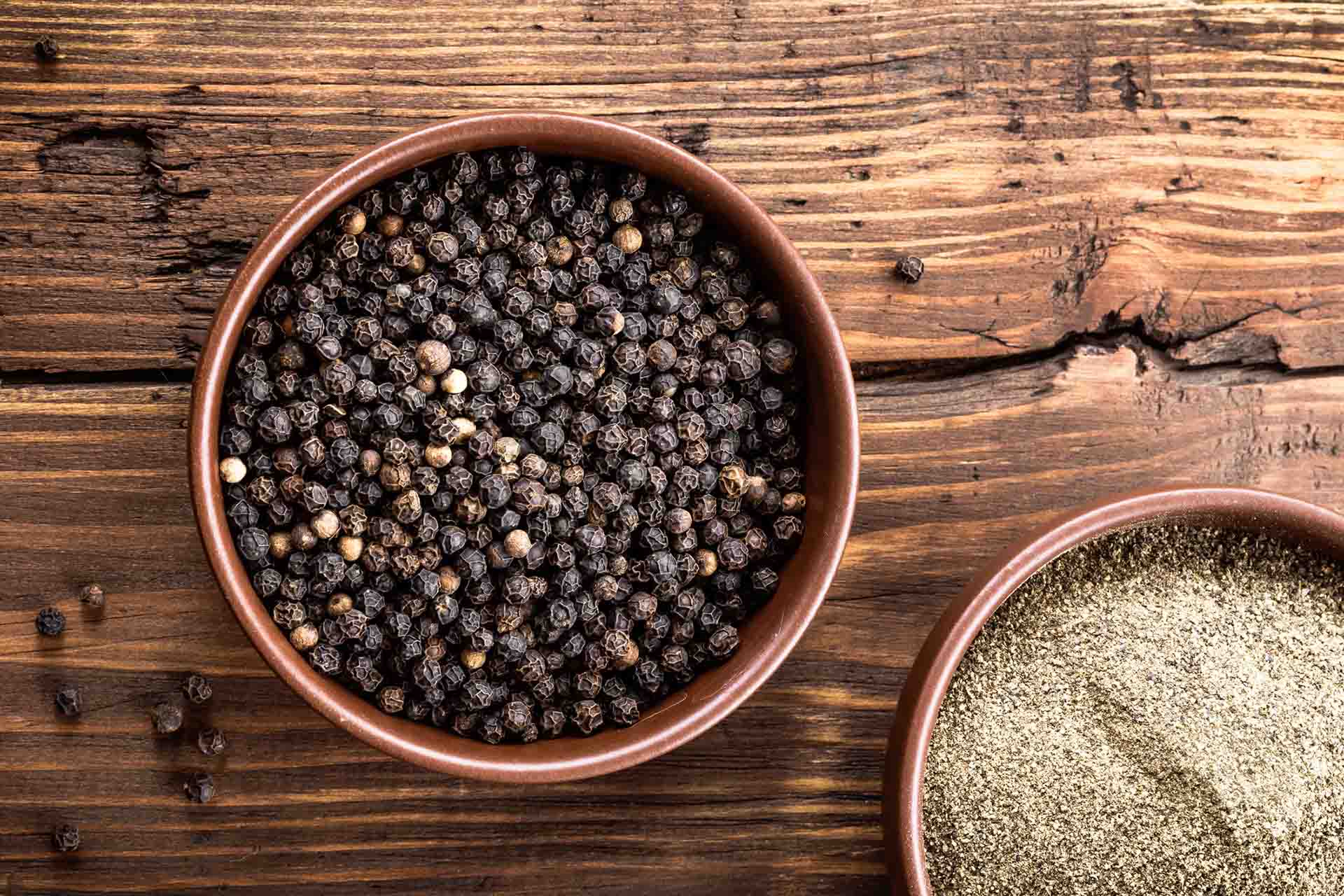
Black peppercorns & ground pepper in bowls / Source
Peppercorns aka Black Pepper
Okay, I admit it. Black pepper seems a bit obvious. But it’s on this warm spices list for a good reason; peppercorns have been around for a long time. A member of the Piperaceae family, it has found itself in dishes for more than 4,000 years.
Hot and pungent, peppercorns come in black, white, green, and pink even though black peppercorns are the most common. The different colored peppercorns and have distinctly different flavors.
The outer shell of the peppercorn serves to seal in the freshness. Most agree peppercorns lose their flavor within 30 days of being ground, so keep that in mind when deciding between ground and whole peppercorns.
It’s handy to know that it’s found in nearly every cuisine and pairs well with almost any other spice. Use it in practically any recipe from savory to sweet to everything in between.
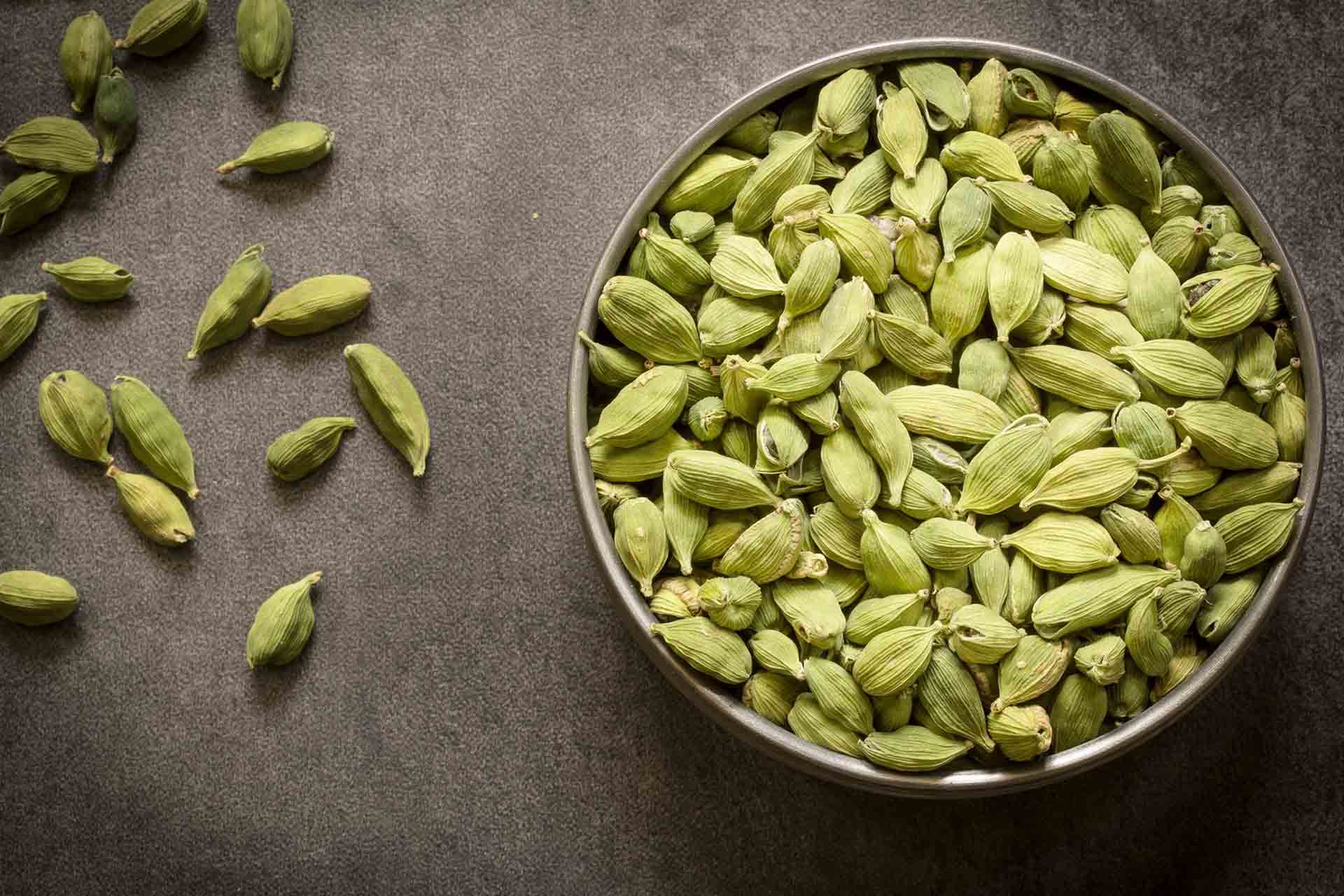
Cardamom pods in a bowl / Source
Cardamom
I love cardamom. Cardamom has a strong, sweet, pungent flavor and smell, but also hints of lemon and mint. It’s a member of the Zingiberaceae (Ginger) family, and a little goes a long way.
Cardamom comes in three different forms; the whole pod-like what is pictured above, the seeds from within the pods, and ground. The whole pods and the seeds need processing before using.
This warm spice pairs well with other warm spices like cinnamon, ginger, and turmeric. Use it with rice or lentil dishes, or with vegetables like carrots, squash, and sweet potatoes.

Cayenne pepper overflowing in a bowl / Source
Cayenne
Cayenne peppers are a particular type of chili pepper. Closely related to bell peppers and jalapenos, cayenne peppers belong to the nightshade family of flowering plants.
Alongside black pepper, cayenne pepper is the next most obvious spice for heat. It adds a big punch to any dish; it’s very spicy. Often used in Mexican and Spanish cuisines, cayenne pepper is known for creating bold flavors.
This spice works well with other warming spices like paprika, cinnamon, and cumin, but nearly any spice can pair with it. Add cayenne anytime you want to add heat to things like soups, dressings, marinades, seasoning blends, chili, rice dishes.
But don’t stop there, cayenne works equally well in desserts. For something sweet with a kick, try cayenne pepper in these Spicy Cinnamon Cayenne Cacao Cookies.

Cinnamon sticks tied with string / Source
Cinnamon
Earthy and sweet, cinnamon finds it’s way into recipes that truly evoke coziness.
More than just taste however, it also offers up some surprising health benefits. According to studies, cinnamon may improve some key risk factors for heart diesease, including “bad” LDL cholesterol, triglycerides, and blood pressure too. (1, 2, 3)
Try it in this easy-to-make Fig Barbecue Sauce goes perfect on top of grilled vegetables, tofu, tempeh, or even seitan.
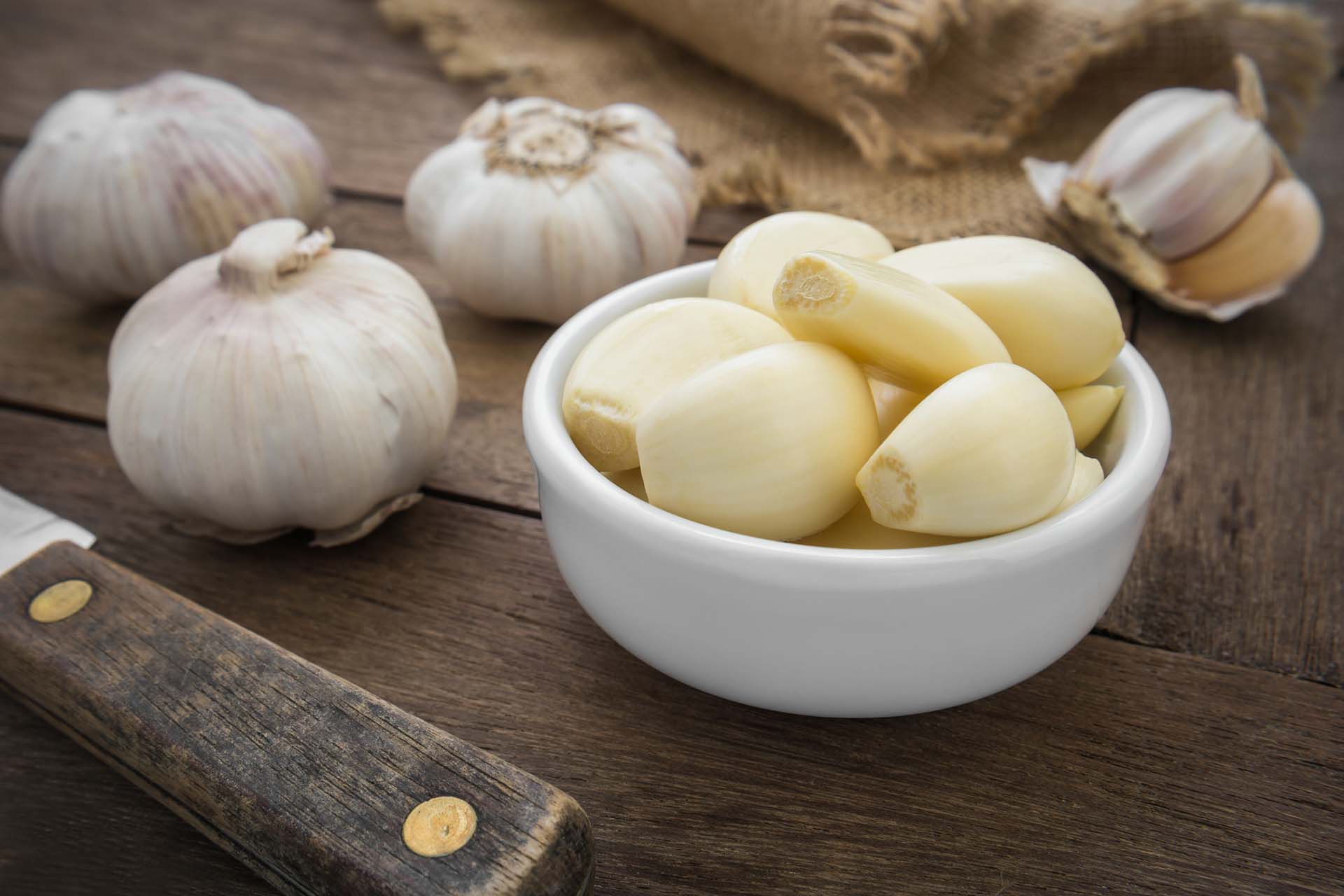
Garlic cloves in a bowl / Source
Garlic
Another all-star in the warm spices line up is garlic. Garlic (Allium sativum) is in the onion genus, Allium.
It’s ridiculously versatile.
When fresh, garlic is spicy and robust. Dried offers flavor and convenience, while roasted is sticky and sweet.
Its versatility is also in its ability to pair with virtually any spice. From dressings and marinades to pasta, stews, soups, casseroles, stir-fries, and more, garlic adds another layer of warmth and flavor to dishes.
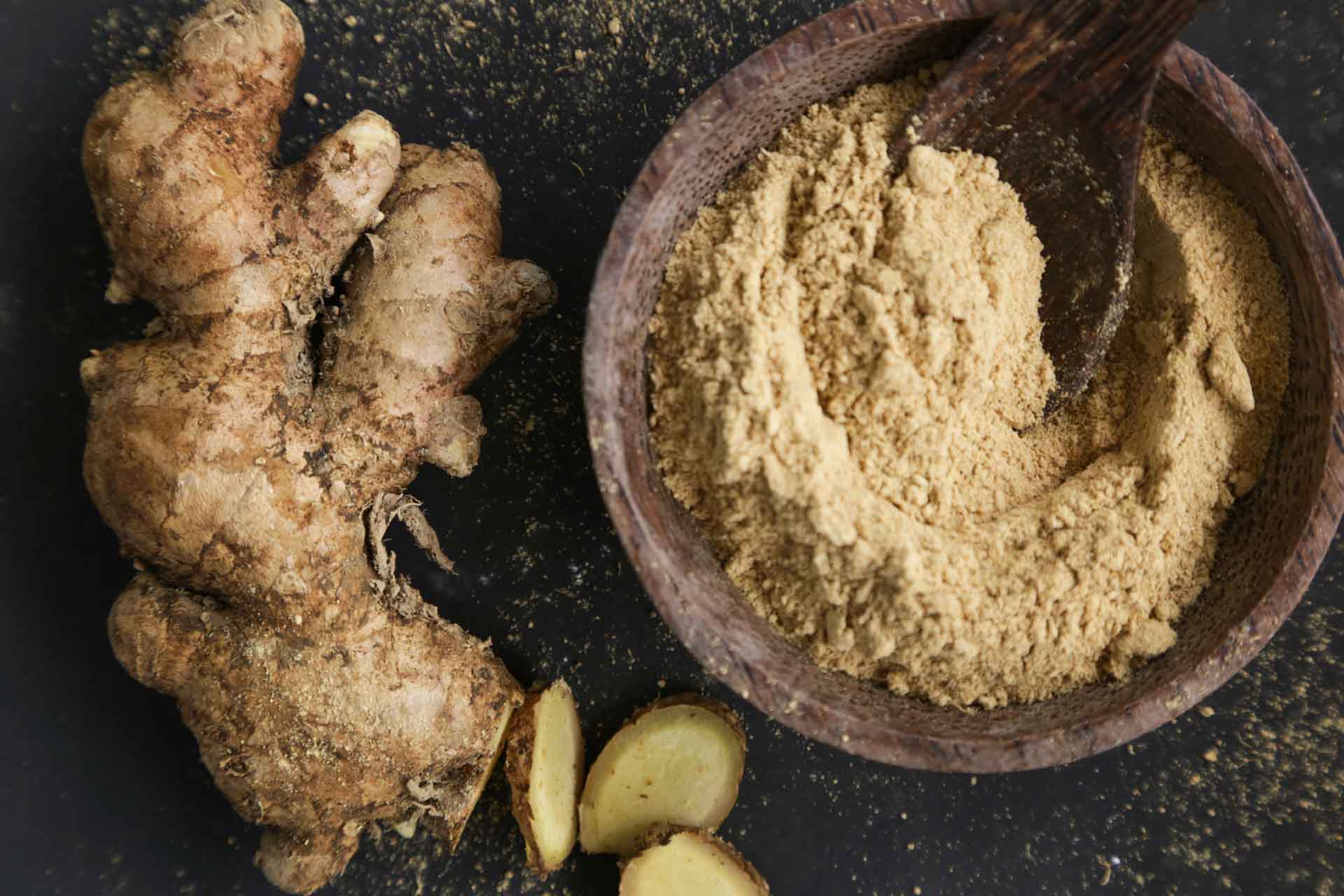
Ground ginger in a bowl sitting next to a root / Source
Ginger
Ginger is another powerhouse in the warm spices line up. It’s a member of the Zingiberceae Family, and it has a spicy bite with a hint of sweetness.
Incredibly adaptable, it is in Asian, Indian, Caribbean, and Middle Eastern cuisines, among others. Ginger pairs well with a wide variety of spices and lends itself well to both savory and sweet recipes.
Alongside its great taste, ginger has considerable health benefits as well. Ginger can treat morning sickness, nausea, muscle soreness, lower blood sugar, and reduce inflammation and the pain associated with menstrual cramps, to name a few. (4, 5, 6, 7, 8)
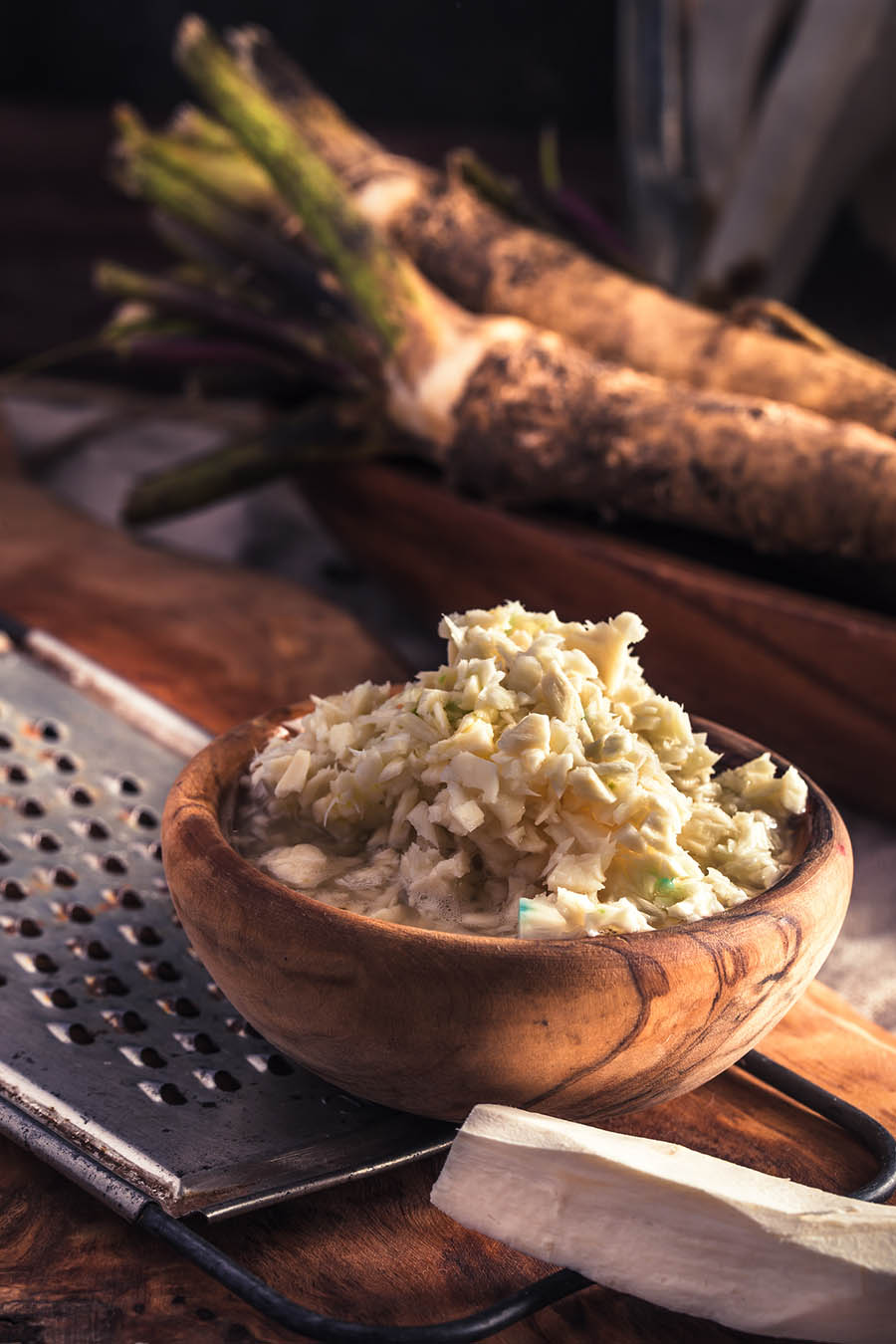
Grated horseradish in a bowl with roots in background / Source
Horseradish
Horseradish is not for the faint of heart. A member of the Brassicaceae (Mustard) Family, this warm spice has an intense flavor that pairs well with fatty foods.
Like cinnamon, it has health benefits. According to the University of Illinois, horseradish contains a large number of glucosinolates. These are compounds that have shown to aid in the resistance to cancer. (9)
Sure, you can buy premade versions in the refrigerated section of well-stocked grocery stores, but you can easily make your own by grating fresh horseradish root found in the produce section.
Horseradish goes excellent in sauces, soups (I always add a teaspoon to my homemade tomato soup), and on top of roasted vegetables. And it’s the secret oomph in these Fifteen Minute Tempeh Tuna Sandwiches.


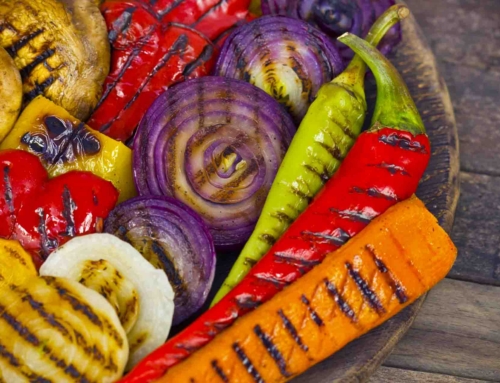
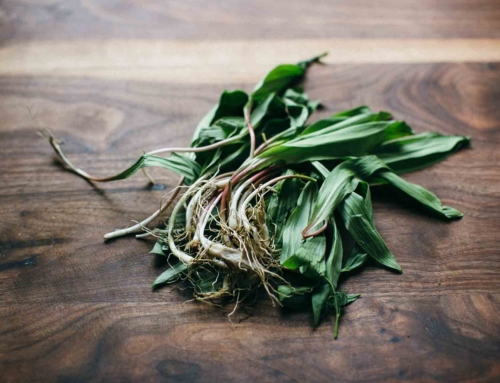
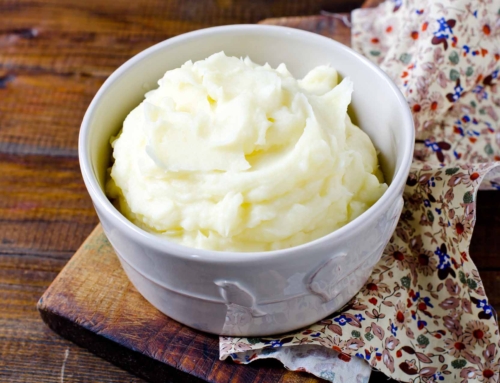


I like some of these spices in hot drinks! My favorite combo is cinnamon, a little bit of anise and clove.